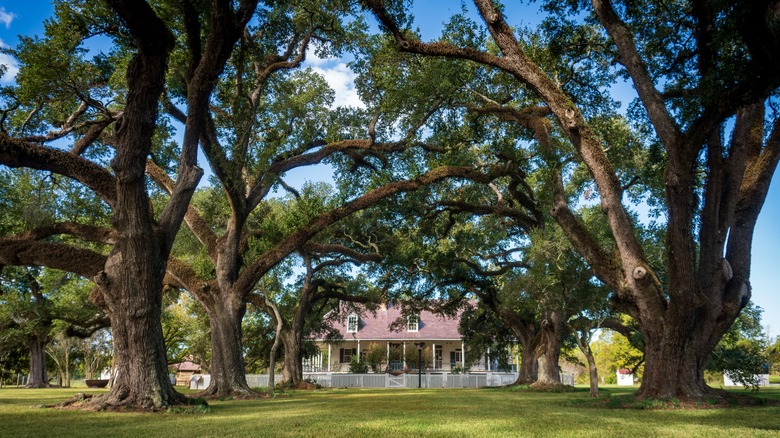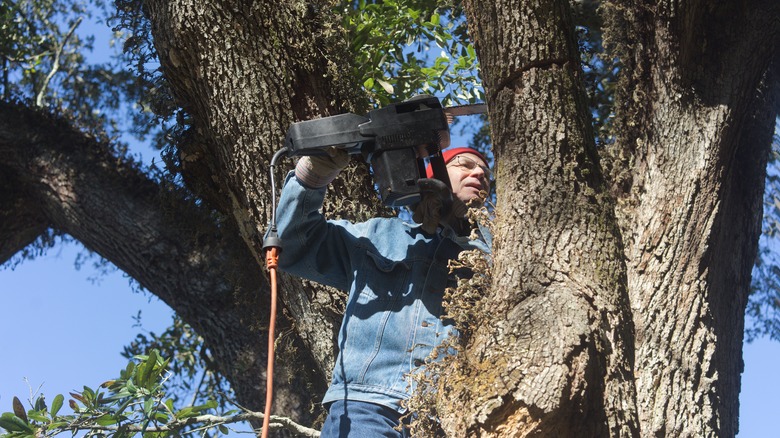Enjoy A Live Oak In Your Front Yard Without It Destroying Driveways Or Sidewalks
Growing a live oak (Quercus virginiana) in your front yard makes a powerful visual statement. These types of oak trees have an impressive size, which is perhaps their most prominent characteristic. They reach heights upwards of 70 feet and have crowns that sprawl to over 100 feet horizontally. With these colossal dimensions, live oaks easily capture attention and provide a great deal of shade. What's more, like other oak species, Quercus virginiana are known to attract wild birds with cozy nesting spots and delicious acorns.
However, with live oaks' gargantuan size comes a problem — equally large root systems that are easily two times as wide as the crown. Not only are these root systems enormous, they occupy the top 6 inches beneath the surface of the soil. This root configuration can cause tremendous issues for adjacent hardscaping features and structures. As the tree matures and the roots expand, they will eventually run into your driveways, sidewalks, and possibly even the home's foundation. When this happens, the roots may cause serious damage, such as cracks and heaving, to the concrete or pavers they encounter.
The key to enjoying live oaks in your front yard without ending up with damaged sidewalks, driveways, or even foundations is simple. All you have to do is plant the tree sufficiently far from any features its roots can destroy. To be safe, you should plan at least a 20-foot clearance between the edge of the crown and any nearby structures, and a 50-foot distance from other trees. With this vital step in mind, let's go over some other best practices for growing and caring for these oak trees on your property.
How to care for an oak tree in your yard
Live oaks grow primarily in the Southeastern U.S. in USDA zones 7B through 10B, so their preferred habitat is on the warmer, sunnier side. So, apart from choosing a spot that's sufficiently far from nearby hardscaping elements, you should find a location that gets direct sunlight, or at minimum partial shade, for most of the day. Likewise, consider the soil pH levels, since live oaks need slightly acidic soil to thrive. Loam, clay, and sand make acceptable growing mediums.
Crucially, you'll need to achieve and maintain healthy garden soil around the oak after you've planted it. This entails keeping the area clear of leaves and other debris and preventing the soil from getting compacted or somehow disturbed while it gets established. Fertilization is not helpful or necessary, and you'll need to avoid using weed killers since they can damage beneficial soil-dwelling fungi that live oaks need to thrive.
Limb maintenance is an important aspect of caring for a young live oak tree. These trees often grow multiple trunks, and the latter siphon off nutrients from the leader trunk. To keep the leader healthy, you'll have to cut away trunks that can put it at a disadvantage. Likewise, excessively long branches can put undue strain on the trunk and even cause it to crack, so prune long branches regularly. For the first five years of the oak's life, prune the tree annually. Then, reduce the frequency and stop pruning altogether once the oak is a few decades old.

